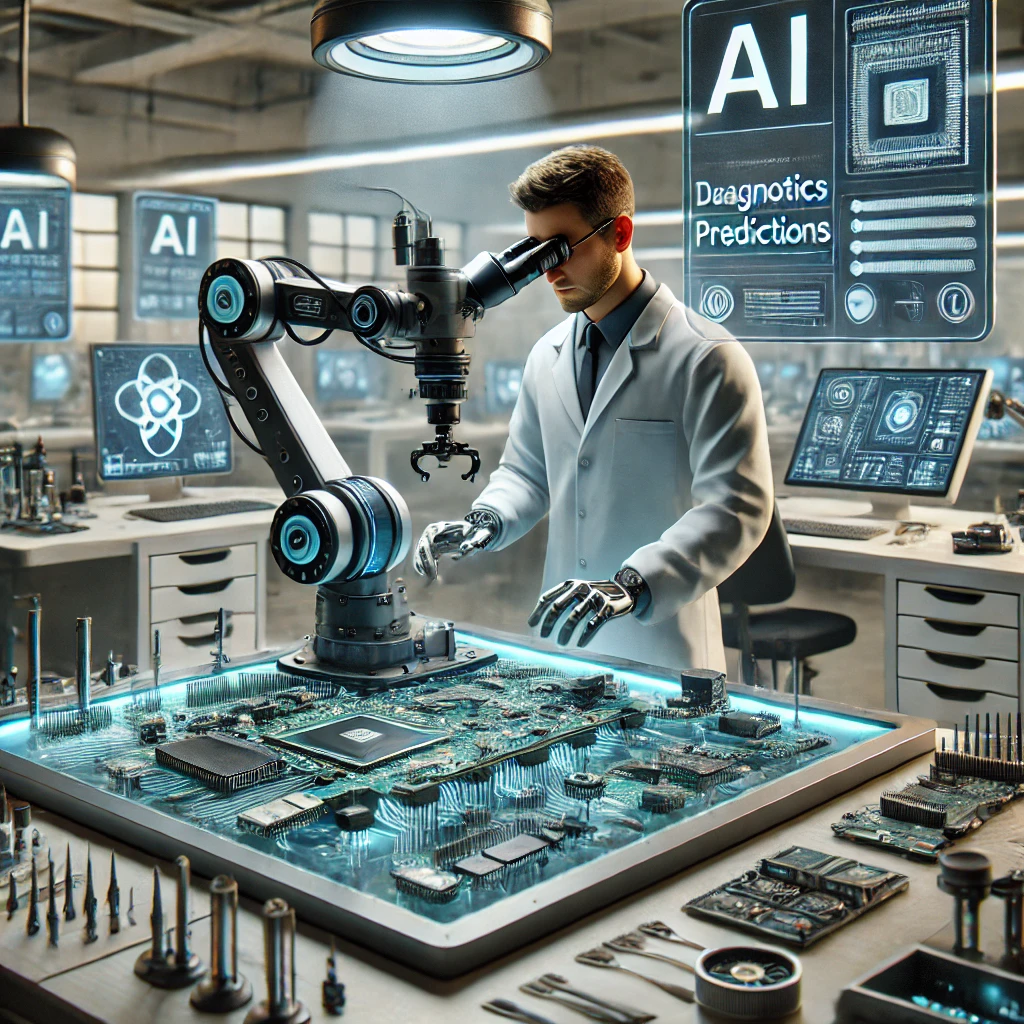The Beauty Centers of the Future: Automation and Artificial Intelligence
The dynamics of the beauty sector have always been open to change; however, technological advancements in recent years have not only accelerated this transformation but also initiated a structural evolution in the sector’s service philosophy, operational processes, and customer expectations. At the heart of this transformation lie two fundamental concepts: automation and artificial intelligence (AI).
The traditional structural model of beauty centers was based on manual processes and human labor-dependent services. In the new era, however, the obligation to standardize services, analyze data rapidly, and offer personalized customer experiences has made automation systems and AI-supported applications inevitable. Today, beauty centers are evolving from mere service points into high-tech data centers and algorithm-driven service delivery platforms.
The New Role of Automation in Beauty Centers
Initially, automation systems in the beauty sector were used merely to increase operational speed and minimize human errors. Today, however, automation has moved beyond being a tool for operational efficiency and has transformed into a core functionality that personalizes the customer experience and makes service quality measurable.
Especially in device-based procedures (such as skin analyses, laser applications, medical aesthetic treatments), automated systems can operate independently from the operator, minimize error rates, and provide protocol-based solutions. Devices can automatically determine application parameters according to the skin type, guide the practitioner, and create personalized protocols for each customer. This not only increases customer trust but also significantly boosts operational efficiency for centers.
One of the most critical contributions of automation is service standardization. In traditional settings, the same procedure could yield different results depending on the practitioner. With automation, protocols become codified, all applications adhere to a defined quality standard, and results are analyzed through measurable data.
Additionally, automation systems in areas such as appointment scheduling, customer data management, inventory tracking, and service planning both accelerate business processes and reduce the margin for error. This reduces operational costs while directly enhancing customer satisfaction.
In-Depth Customer Analysis with Artificial Intelligence
AI has entered the beauty sector not merely as a technological innovation but as a paradigm shift redefining customer relationships.
AI systems surpass traditional customer analysis by evaluating each customer’s skin structure, habits, aging tendencies, environmental exposure rates, and genetic predispositions through big data analysis, offering tailor-made care recommendations.
For instance, an AI-supported skin analysis device not only assesses the current condition of the skin but also, based on previous analyses, can predict future potential problems, highlight which products yielded better results, and identify seasonal changes in the skin’s behavior.
This wealth of data offers beauty centers a powerful advantage: proactive service delivery.
Instead of reacting to a skin problem after it occurs, systems can anticipate risks and offer preventive care protocols in advance. This proactive approach elevates customer loyalty and transforms beauty centers into personal health consultancy hubs.
Moreover, AI analyzes customer feedback and service outcomes to identify areas for improvement. For example, if customer satisfaction with a particular service declines, the system generates automatic reports and alerts the management. This allows businesses to shift from reactive to proactive quality management.
Technology Investment: Not Just Devices, but Infrastructure Transformation
The integration of automation and AI cannot be achieved solely by investing in a few new devices. True transformation requires beauty centers to rethink their organizational structures, workflow diagrams, and service philosophies around a technology-driven model.
Successful technology integration demands:
- Data-based appointment and customer management systems
- Automated reporting and performance monitoring tools
- Customer loyalty programs and personalized recommendation engines
- Cloud-based data security infrastructures
- Multi-platform integrations (web, mobile apps, CRM systems)
Without these supporting infrastructures, the mere use of advanced devices will not provide a competitive advantage. Technology investment must be supported by organizational capabilities to create real differentiation.
The Beauty Centers of the Future: Automation and Artificial Intelligence
The dynamics of the beauty sector have always been open to change; however, technological advancements in recent years have not only accelerated this transformation but also initiated a structural evolution in the sector’s service philosophy, operational processes, and customer expectations. At the heart of this transformation lie two fundamental concepts: automation and artificial intelligence (AI).
The traditional structural model of beauty centers was based on manual processes and human labor-dependent services. In the new era, however, the obligation to standardize services, analyze data rapidly, and offer personalized customer experiences has made automation systems and AI-supported applications inevitable. Today, beauty centers are evolving from mere service points into high-tech data centers and algorithm-driven service delivery platforms.
The New Role of Automation in Beauty Centers
Initially, automation systems in the beauty sector were used merely to increase operational speed and minimize human errors. Today, however, automation has moved beyond being a tool for operational efficiency and has transformed into a core functionality that personalizes the customer experience and makes service quality measurable.
Especially in device-based procedures (such as skin analyses, laser applications, medical aesthetic treatments), automated systems can operate independently from the operator, minimize error rates, and provide protocol-based solutions. Devices can automatically determine application parameters according to the skin type, guide the practitioner, and create personalized protocols for each customer. This not only increases customer trust but also significantly boosts operational efficiency for centers.
One of the most critical contributions of automation is service standardization. In traditional settings, the same procedure could yield different results depending on the practitioner. With automation, protocols become codified, all applications adhere to a defined quality standard, and results are analyzed through measurable data.
Additionally, automation systems in areas such as appointment scheduling, customer data management, inventory tracking, and service planning both accelerate business processes and reduce the margin for error. This reduces operational costs while directly enhancing customer satisfaction.
In-Depth Customer Analysis with Artificial Intelligence
AI has entered the beauty sector not merely as a technological innovation but as a paradigm shift redefining customer relationships.
AI systems surpass traditional customer analysis by evaluating each customer’s skin structure, habits, aging tendencies, environmental exposure rates, and genetic predispositions through big data analysis, offering tailor-made care recommendations.
For instance, an AI-supported skin analysis device not only assesses the current condition of the skin but also, based on previous analyses, can predict future potential problems, highlight which products yielded better results, and identify seasonal changes in the skin’s behavior.
This wealth of data offers beauty centers a powerful advantage: proactive service delivery.
Instead of reacting to a skin problem after it occurs, systems can anticipate risks and offer preventive care protocols in advance. This proactive approach elevates customer loyalty and transforms beauty centers into personal health consultancy hubs.
Moreover, AI analyzes customer feedback and service outcomes to identify areas for improvement. For example, if customer satisfaction with a particular service declines, the system generates automatic reports and alerts the management. This allows businesses to shift from reactive to proactive quality management.
Technology Investment: Not Just Devices, but Infrastructure Transformation
The integration of automation and AI cannot be achieved solely by investing in a few new devices. True transformation requires beauty centers to rethink their organizational structures, workflow diagrams, and service philosophies around a technology-driven model.
Successful technology integration demands:
- Data-based appointment and customer management systems
- Automated reporting and performance monitoring tools
- Customer loyalty programs and personalized recommendation engines
- Cloud-based data security infrastructures
- Multi-platform integrations (web, mobile apps, CRM systems)
Without these supporting infrastructures, the mere use of advanced devices will not provide a competitive advantage. Technology investment must be supported by organizational capabilities to create real differentiation.




